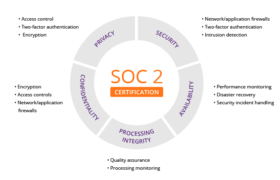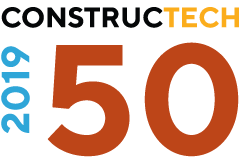Computer Guidance Corporation Announces Rapid Growth in Cloud Hosting in FY2020
Cloud-Based Construction Software Developer & Provider Achieves Massive 200% YOY Growth and Exponential Increase in Hosted eCMS Users and Deployments
Scottsdale, Arizona—September 09, 2020—Computer Guidance Corporation, the leading developer of cloud-based ERP solutions for the construction industry, announced today significant year-over-year growth of its Cloud Hosting services.
CGC’s Cloud Hosting services have grown a minimum of 20% annually since inception and experienced a 200% rate of growth year over year for Fiscal Year 2020. CGC’s continuous infrastructure investment averages $1-$2 million annually, resulting in 99.99% uptime and reliability.
Key factors in powering the company’s growth have been attributed to its eCMS Cloud Construction ERP software’s Web-based technology platform which allows users to access integrated business-critical data and execute streamlined workflows anytime, anywhere on any device through secure Internet access. In addition, CGC’s Professional Services, Technical Services, and Application Support teams have been praised for their successful management of implementations from start to finish, including project planning, customization, data migration, training, and aftercare, with the highest level of industry experience and technological expertise.
“Our growth is a testament to our innovative products, customer-focused support and services teams, and our incredible customers and partners,” said Michael Bihlmeier, President, Computer Guidance Corporation. “As we grow with our clients, our teams work hard every day to preserve the trust placed in us and in our products and services.”
“Our customers perform every aspect of construction – from small specialty jobs to massive international projects – and we’re proud to support them with the most feature-rich construction-specific financial and operations solution available in the market,” stated Steven Gross, VP of Client Solutions, Computer Guidance Corporation. “We’ve partnered with many of our clients across several decades and continue to welcome new customers to the Computer Guidance Corporation family. Every relationship we build has its foundations in the spirit of product development collaboration, respect, and trust.”
“Bringing big data and construction planning to the Cloud is and will continue to be our top priority, providing exponential growth potential to CGC and our customers alike,” said Bob Shantz, Director of Infrastructure and Cloud Services, Computer Guidance Corporation. “We will continue to invest in the infrastructure and resources to support of our clients’ digital business transformation with a hosted platform renowned for its industry-leading security, SOC-Compliancy, outstanding performance and unmatched level of support.”
About Computer Guidance Corporation
With over 20% of their clients represented on top ENR lists, Computer Guidance Corporation delivers the leading construction enterprise resource planning solution including financial and project management, #1 business intelligence, mobile, and enterprise content management. Scalable, customizable, and cloud-hosted, CGC serves thousands throughout North America. Computer Guidance Corporation is part of the JDM Technology Group, a global construction-specific software conglomerate that serves more than 500,000+ in 40 countries and 6 continents.
 The audit reviewed several processes and procedures that have been implemented by Computer Guidance to proactively manage the cloud environments that host the eCMS system, associated Tier III data centers, including:
The audit reviewed several processes and procedures that have been implemented by Computer Guidance to proactively manage the cloud environments that host the eCMS system, associated Tier III data centers, including:
 Computer Guidance can be adapted to meet your unique needs regardless of size, scope, and complexity, delivering data and automation for smarter construction. The construction-specific, web-based, cloud ERP platform has it all …
Computer Guidance can be adapted to meet your unique needs regardless of size, scope, and complexity, delivering data and automation for smarter construction. The construction-specific, web-based, cloud ERP platform has it all …
 Scottsdale, Arizona – July 16, 2019 – Computer Guidance Corporation, the leading developer of ERP software solutions for the construction industry, today announced that the company was recognized among the 2019 Constructech 50 Winners, a listing of the most influential construction technology companies with strong company culture and ongoing market presence.
The Constructech 50 is about more than just technology, although that is a key component, they serve their customers well by equipping their employees to innovate, inspire, and lead with excellence.
The Constructech 50 is comprised of the most influential technology firms in the construction industry. It takes into consideration both public and private companies, revenue, customers, and intangibles, which includes how responsive the companies are to customers and the industry as a whole, how accessible they are, and how they serve the industry behind the scenes.
The editors underwent an extensive judging process, which involved reviewing entries, conducting research on each company considered, and engaging in additional conversations with industry advisors including professors and construction CIOs who share their thoughts about key companies in the space.
“This year’s Constructech 50 prove that these companies have the vision, intuition, and stamina, to continue to help the construction industry build bigger and better projects,” says Peggy Smedley, editorial director of Constructech magazine and president of Specialty Publishing Media. “These companies have truly built a business that is designed to stand the test of time by empowering employees to serve the industry well.”
“We are honored to be recognized among the most influential construction technology companies in North America,” said Mike Bihlmeier, President, Computer Guidance Corporation. “This recognition is a true testament of our continued vision and daily efforts to work hand in hand with our customers solving their daily challenges and bringing them a competitive edge through our innovative construction software solutions.”
Scottsdale, Arizona – July 16, 2019 – Computer Guidance Corporation, the leading developer of ERP software solutions for the construction industry, today announced that the company was recognized among the 2019 Constructech 50 Winners, a listing of the most influential construction technology companies with strong company culture and ongoing market presence.
The Constructech 50 is about more than just technology, although that is a key component, they serve their customers well by equipping their employees to innovate, inspire, and lead with excellence.
The Constructech 50 is comprised of the most influential technology firms in the construction industry. It takes into consideration both public and private companies, revenue, customers, and intangibles, which includes how responsive the companies are to customers and the industry as a whole, how accessible they are, and how they serve the industry behind the scenes.
The editors underwent an extensive judging process, which involved reviewing entries, conducting research on each company considered, and engaging in additional conversations with industry advisors including professors and construction CIOs who share their thoughts about key companies in the space.
“This year’s Constructech 50 prove that these companies have the vision, intuition, and stamina, to continue to help the construction industry build bigger and better projects,” says Peggy Smedley, editorial director of Constructech magazine and president of Specialty Publishing Media. “These companies have truly built a business that is designed to stand the test of time by empowering employees to serve the industry well.”
“We are honored to be recognized among the most influential construction technology companies in North America,” said Mike Bihlmeier, President, Computer Guidance Corporation. “This recognition is a true testament of our continued vision and daily efforts to work hand in hand with our customers solving their daily challenges and bringing them a competitive edge through our innovative construction software solutions.”